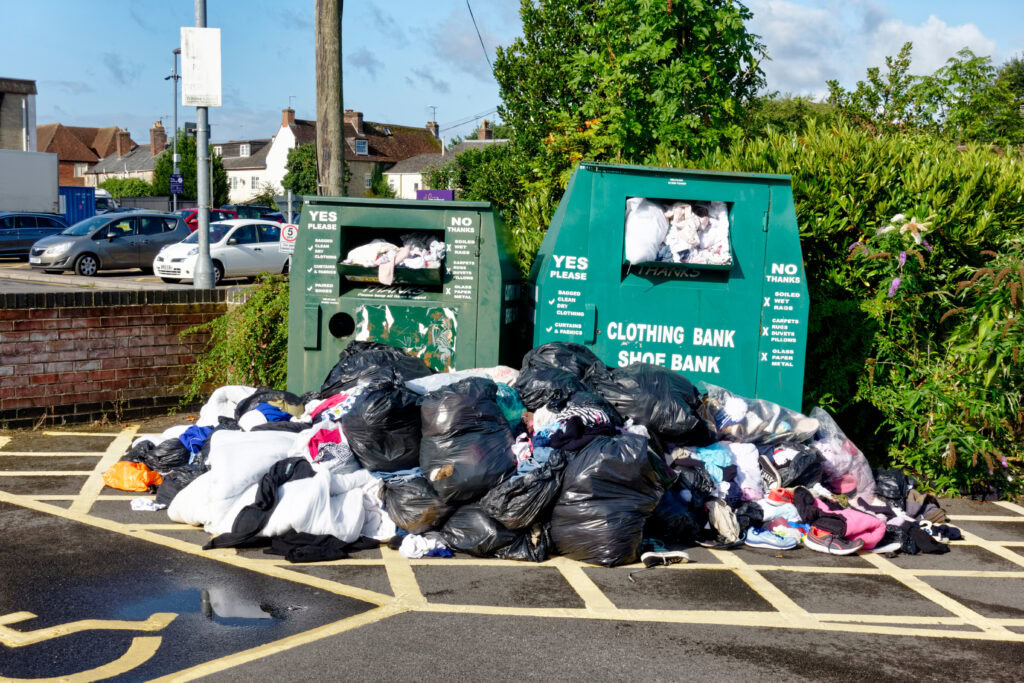
Workers currently dispose of asbestos waste in landfills designed to contain hazardous materials. But this method does not reduce asbestos health risks. Asbestos recycling can reduce exposure in landfills by breaking down the toxic fibres. It allows for the reuse of these recycled materials in industrial processes. Recycling reduces the environmental impact of traditional disposal methods.
What methods exist to recycle asbestos?
Several methods exist to recycle asbestos. They are not common because of high costs and technical challenges. The main methods include thermal treatment, chemical treatment and high-speed milling.
Thermal treatment
Thermal treatment involves heating asbestos to 1,000°C to 1,200°C (1,832°F to 2,192°F). This process breaks down the asbestos fibres into safe materials. These include silica glass and a type of inert ceramic. The high heat changes the chemical structure of asbestos. This makes it safe for disposal or reuse, such as in road construction or manufacturing.
A type of thermal treatment is known as vitrification. It melts asbestos into a glass-like substance. This glass-like product can be repurposed, reducing the need for raw materials and minimising waste. Vitrification is a successful recycling method. It turns asbestos into an inert, non-toxic material.
Chemical treatment
Chemical treatment uses acids, alkalis or other agents to break down asbestos fibres. This process dissolves the hazardous material into a liquid or transforms it into non-toxic compounds. Some methods use powerful acids. They break down asbestos fibres into harmless silica, magnesium and iron compounds. These can then be safely discarded or repurposed.
Chemical treatment is effective. But it requires precise control and monitoring to ensure that it neutralises the asbestos fibres. It also produces chemical byproducts that require safe handling and disposal.
High-speed milling
The high-speed milling process grinds asbestos fibres at intense speeds. This fractures them into non-hazardous, inert minerals. This recycling method turns asbestos into a safer material. Workers can dispose of or repurpose this material.
What are the benefits of recycling asbestos?
Asbestos recycling benefits people and the environment. It removes health risks by neutralizing toxic fibres, cuts landfill waste and promotes sustainability.
Benefits of Asbestos recycling
- Elimination of health risks: Landfills containing asbestos pose long-term risks. The main benefit of asbestos recycling is that it alters the hazardous asbestos fibers into non-toxic materials. This provides a permanent solution to asbestos waste.
- Environmental impact: Recycling asbestos cuts landfill waste, saving space and reducing pollution. Some of the recycled materials can be repurposed. This promotes sustainability by reducing the need for raw materials.
- Resource recovery: The byproducts of asbestos recycling, such as silica and other minerals, are valuable resources. The vitrified glass produced from thermal treatment can be used in construction.
Asbestos recycling is a promising alternative to traditional disposal. It neutralises the hazardous fibres and reduces environmental harm.
What are the risks of recycling asbestos?
Recycling asbestos is costly and technically complex, so it isn’t widely accessible. The process has safety risks. Improper handling can release toxic fibres. This could expose workers and nearby communities. Strict safety protocols are essential. They prevent airborne contamination and ensure asbestos is neutralised.
Risks of asbestos recycling
- Complex and costly process: Asbestos recycling is a complex, costly process. It needs specialised equipment and expertise. The high heat and chemicals in other methods drive up the cost. This cost can deter companies and governments from adopting asbestos recycling on a large scale.
- Safety concerns: Handling asbestos during the recycling process poses significant risks. Improper handling can release dangerous fibres into the air. This may expose workers and nearby communities. Strict safety measures are vital to prevent exposure. They include protective equipment and containment systems.
- Limited availability: While asbestos recycling methods exist, they are not widely used worldwide. Most countries still rely on landfill disposal because of the lower cost and availability.
Asbestos recycling has risks, including high costs and the threat of exposure. But it can reduce the risk of future asbestos exposure and promotes sustainability. This makes it a key option for managing asbestos waste. As tech improves and recycling gets cheaper, asbestos recycling may become more common.










Subscribe for free